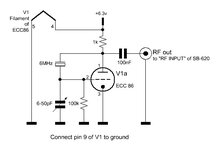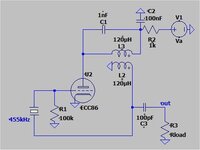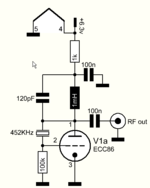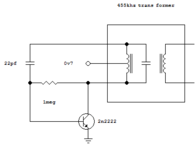neazoi
Advanced Member level 6
Here http://qrp.gr/tubeosc/ is a pierce low voltage tube crystal oscillator I have designed and it works fine on 6MHz but it does not work with a 452KHz crystal. I tried to remove the variable capacitor but still it does not oscillate. There are no other "resonant" elements to tweak. Any ideas?




